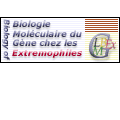
|
|















|
International Summer School
From Genome to Life:
Structural, Functional and Evolutionary approaches
GRENET Olivier |
|
Novartis Pharma Ag, Pharmacogenomics, WSH-2881.3.30, Basel 4002, Switzerland title: Application of Genomics tools to Drug development Many pharmaceutical compounds fail during their development due to unexpected toxicity or lack of efficacy. Several tests are being used to predict drug-induced toxicity. The recent advent of toxicogenomics, a discipline derived from a combination of the fields of toxicology, genomics, proteomics and bioinformatics, promises new hope to the identification of signatures for a drug effect at the molecular level and to the better anticipation of drug toxicity and efficacy. DNA array technology is now a prominent technology for the analysis of differentially expressed genes in the pharmacological field. However the microarray procedure is prone to errors. The problems can usually arise from both the biological sample and the quality of the DNA array design. Therefore it has become mandatory to confirm the data derived from such experiments. Many techniques are available, but the fastest and most accurate one is the Real-Time PCR technology. This method can be used either with TaqMan® probes or with the SyBr Green® dye. Some differences are noticeable between these two PCR-based methodologies and therefore their respective usage may differ. The advantages of the PCR gene expression analysis relies in the speed of the technique as well as in the highly quantitative data obtained. It is indeed critical to be able to assess the quantitative changes in gene expression related to a treatment or a disease state. The dose and time-dependencies are important for the understanding and the evaluation of the biological relevance of a particular gene marker. The quantitative results obtained by PCR allow better correlation with the extent of the pharmacological effect of a compound or with the grading of a pathological finding. This correlation is mandatory in order to prove the relevance of a marker for the pharmacological or the toxicological effect induced by a compound. In addition, once the relevant markers are identified, in situ hybridisation allows the localization of the expression of the gene marker at the mRNA level in specific target tissues. Taken together, these data provide essential information for the understanding of compound-related effects |